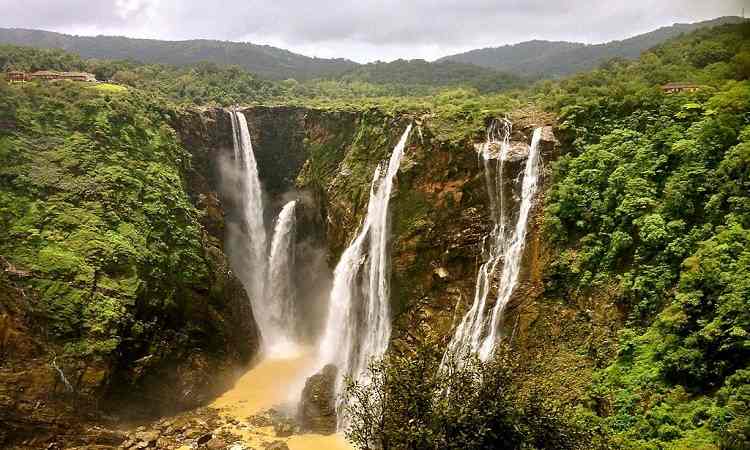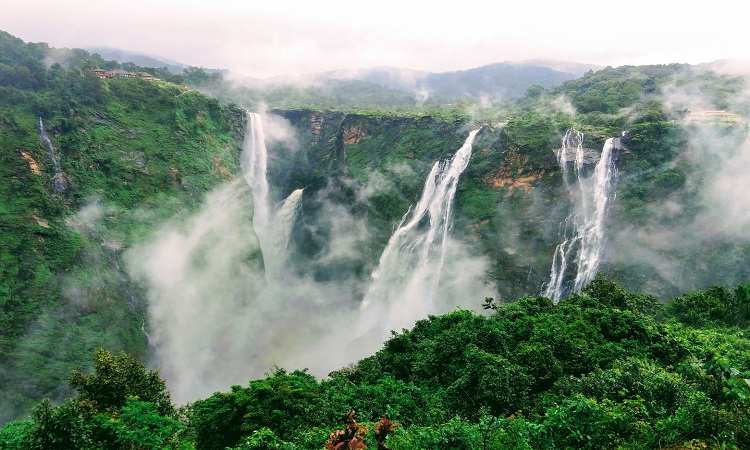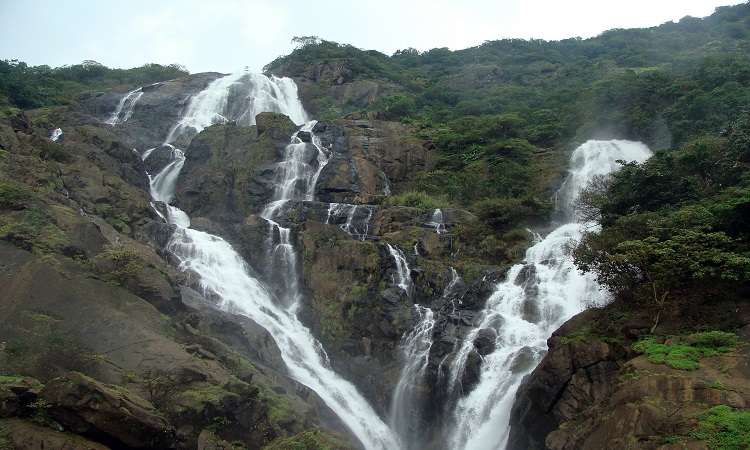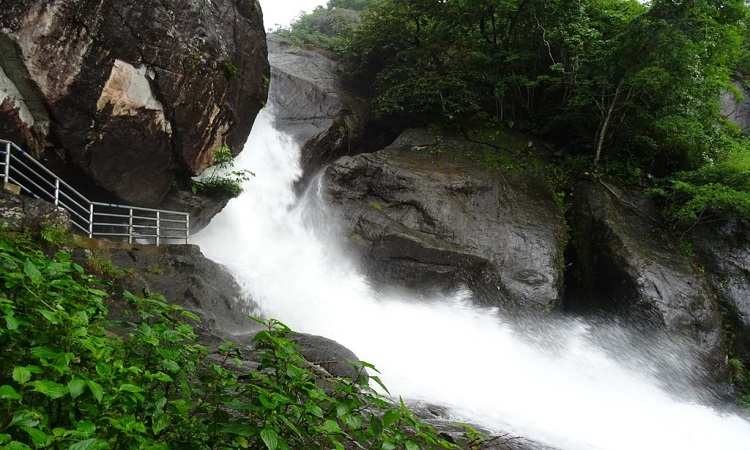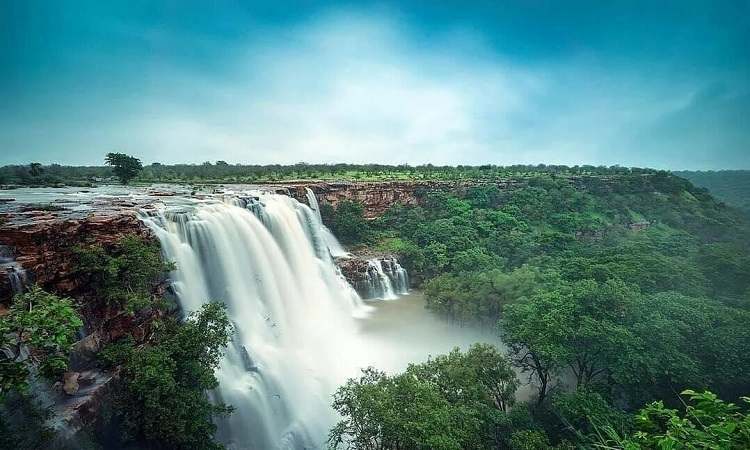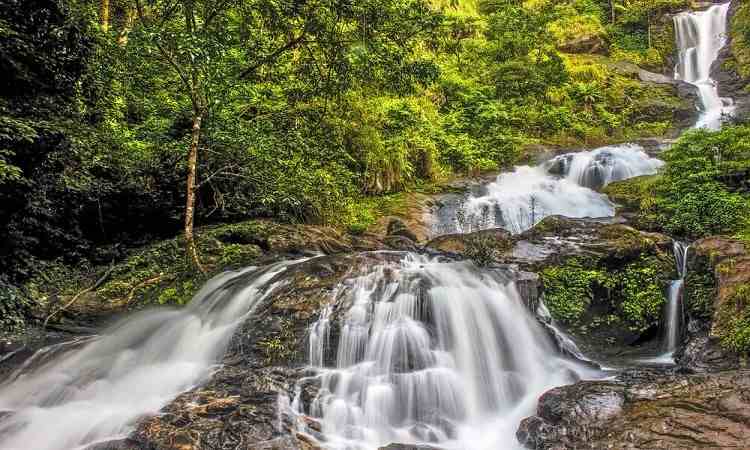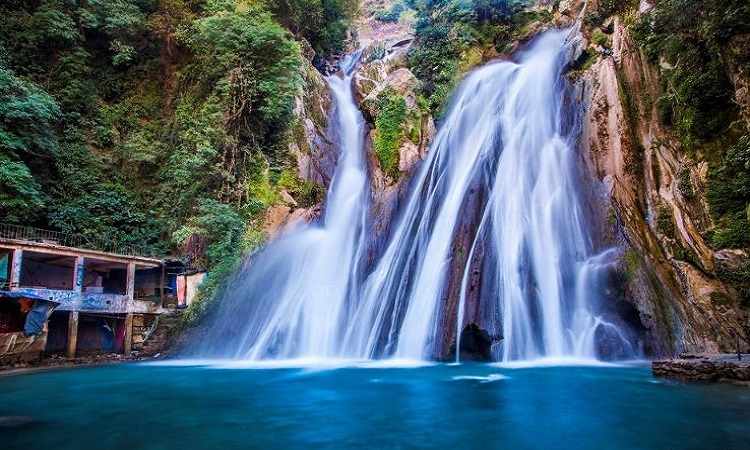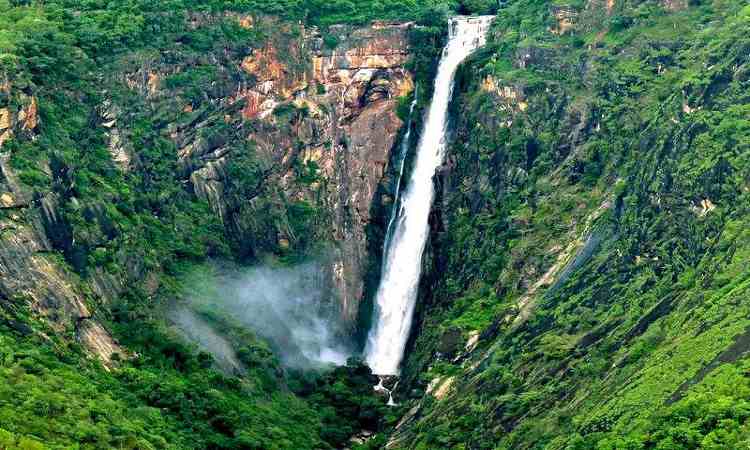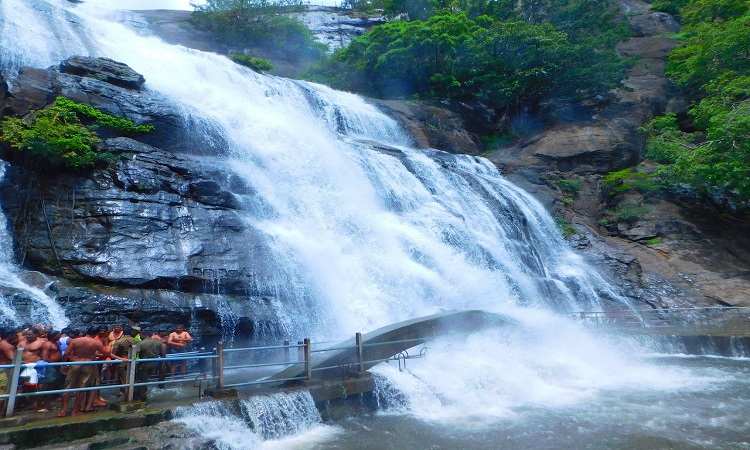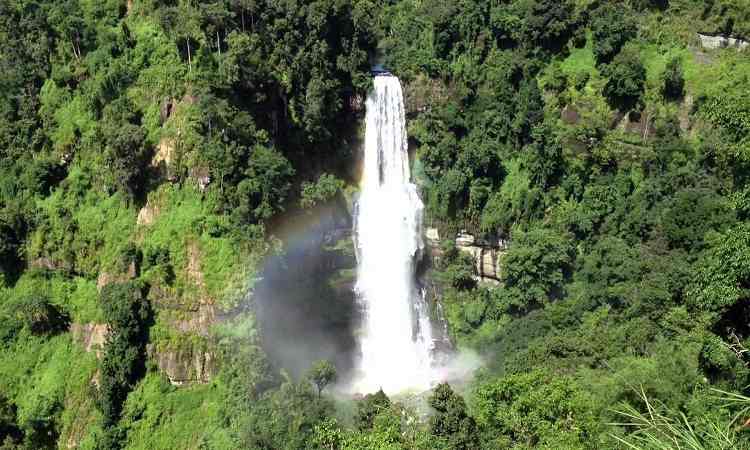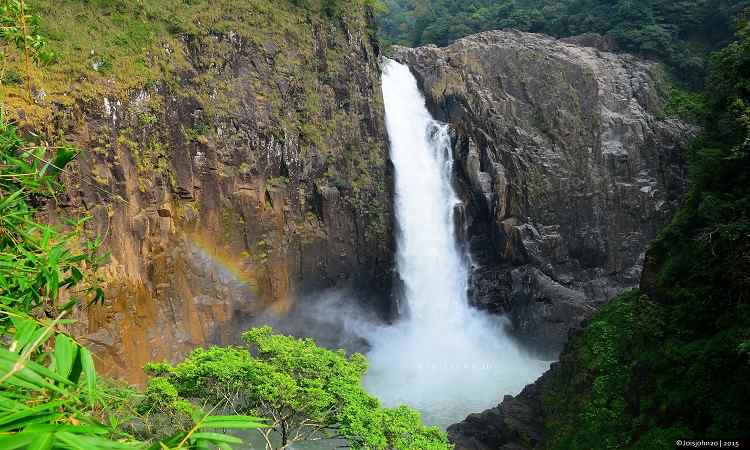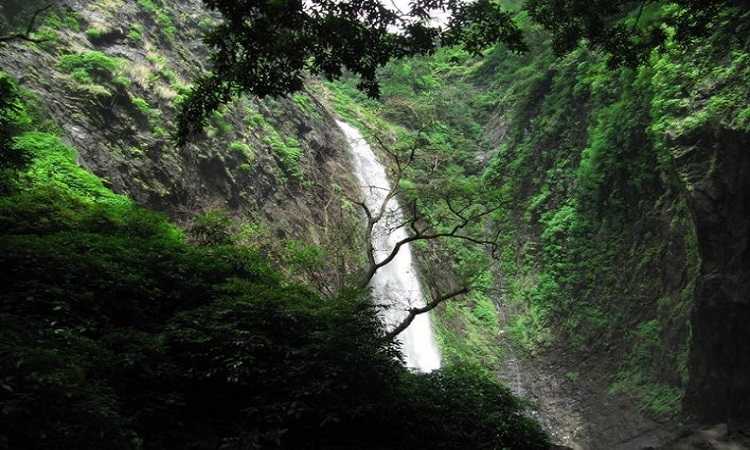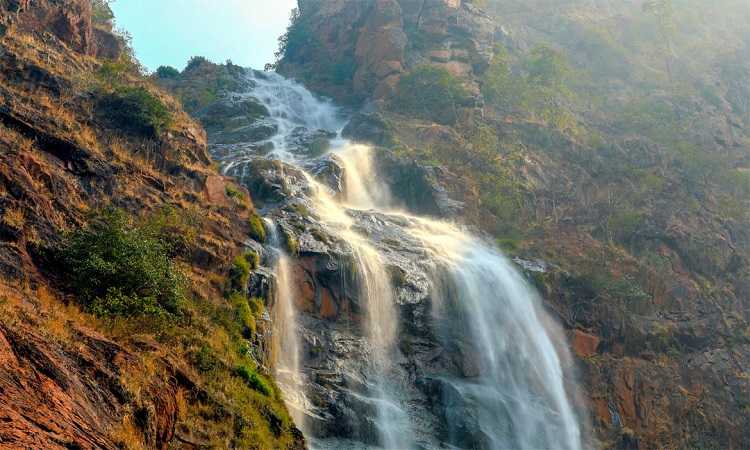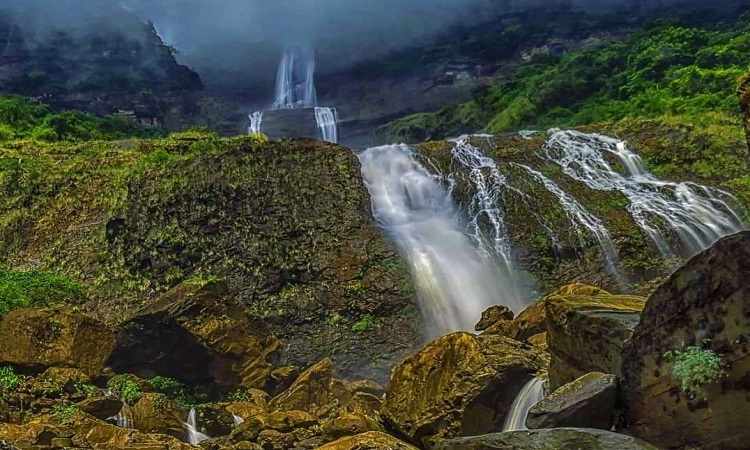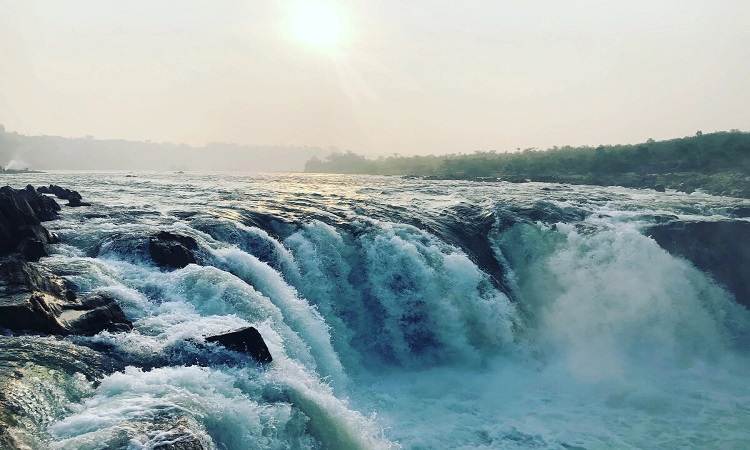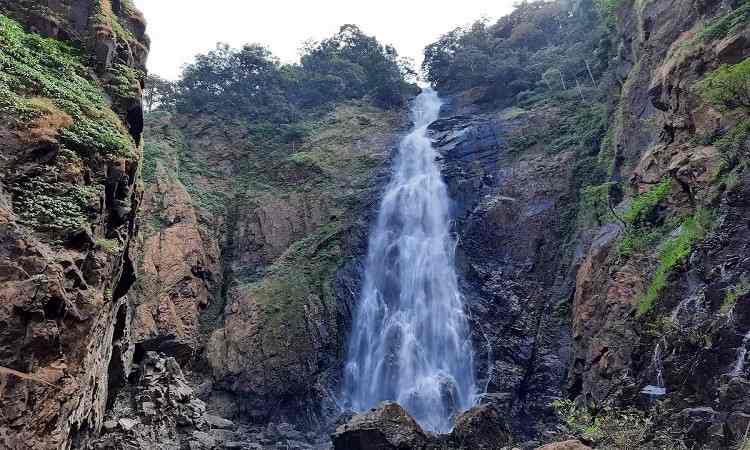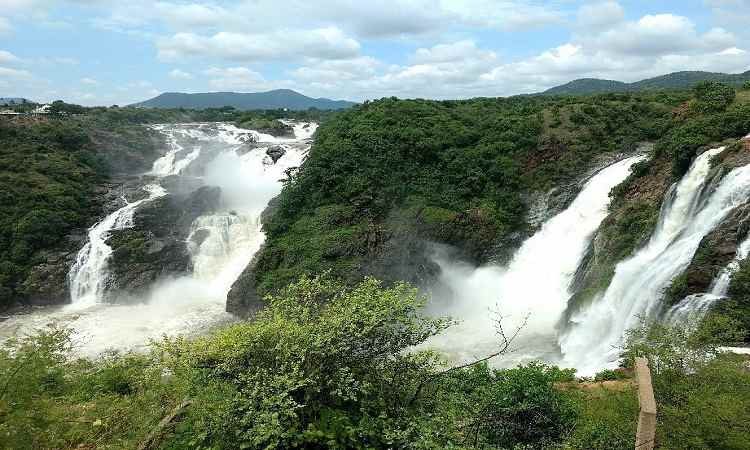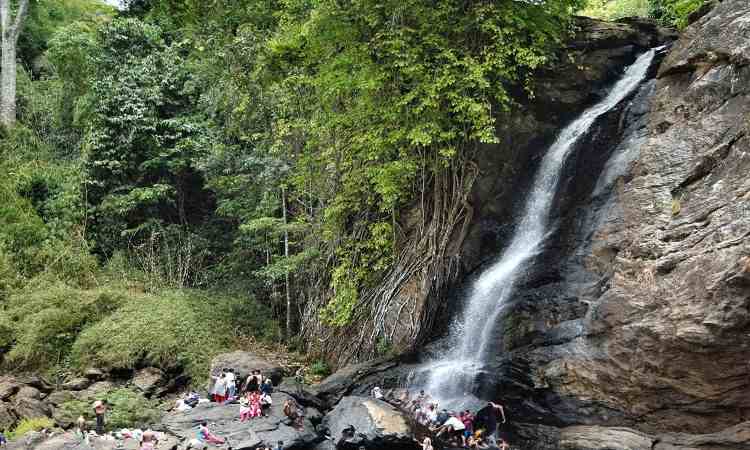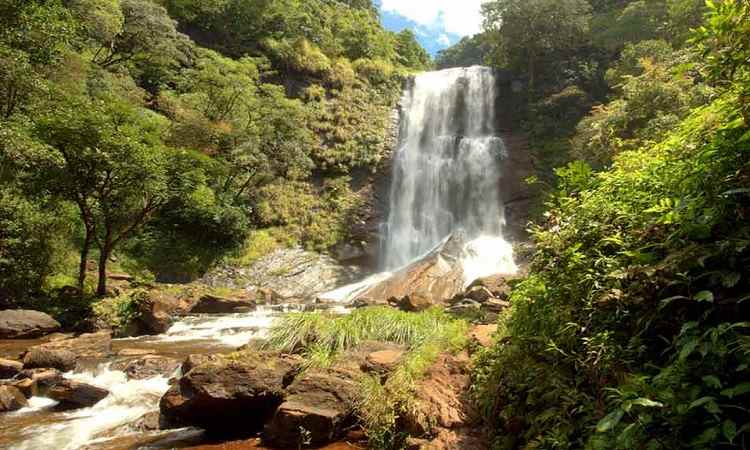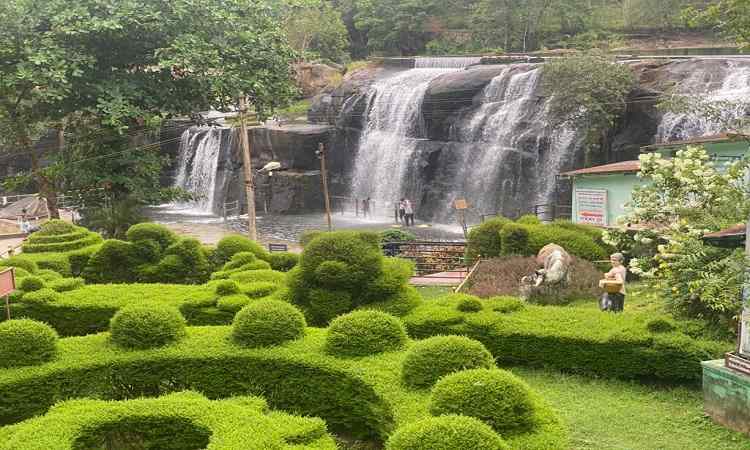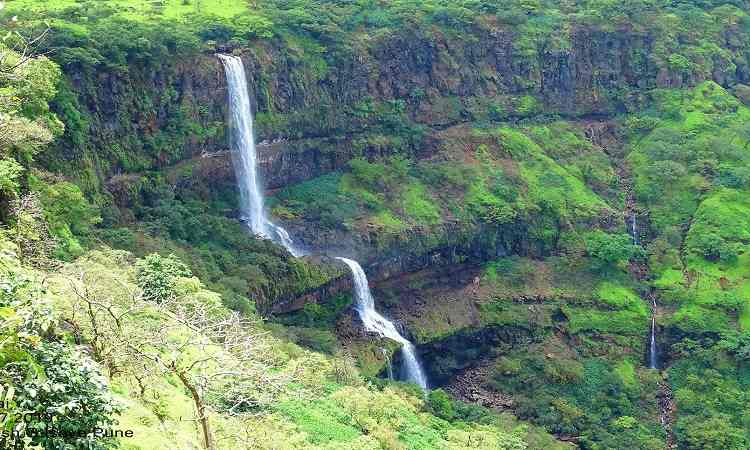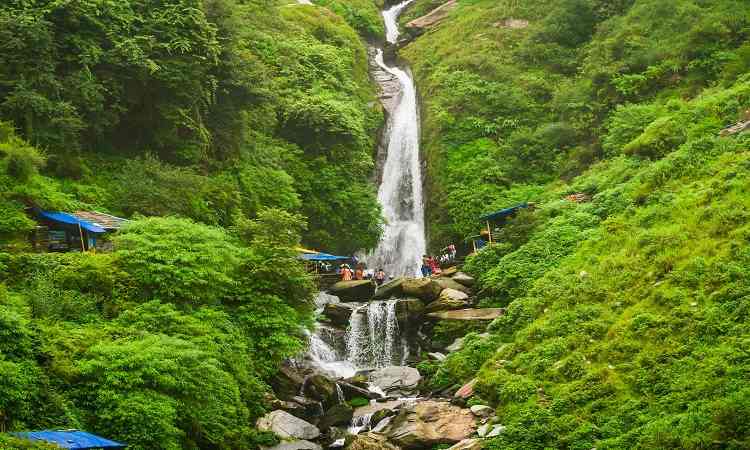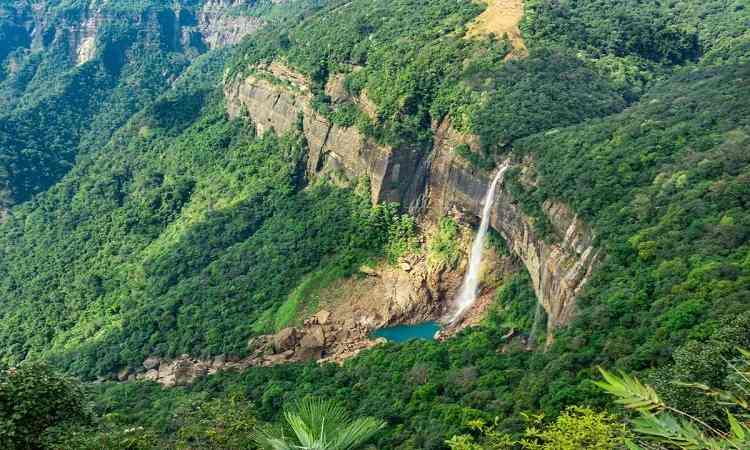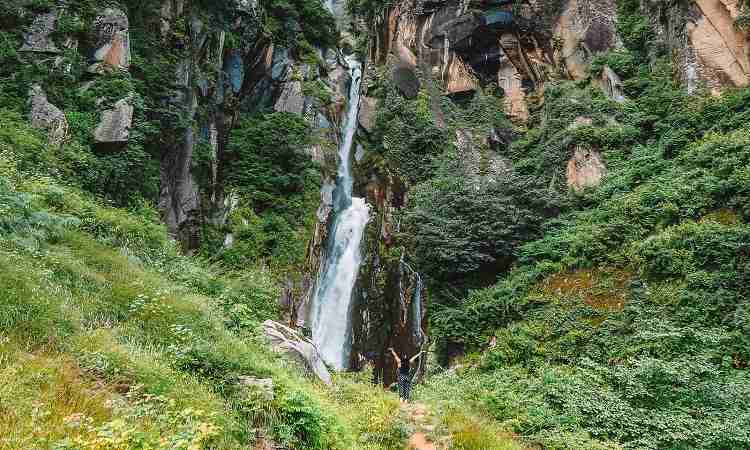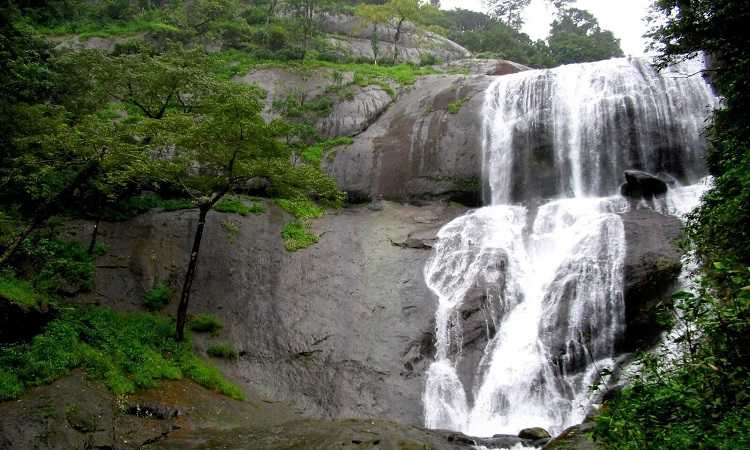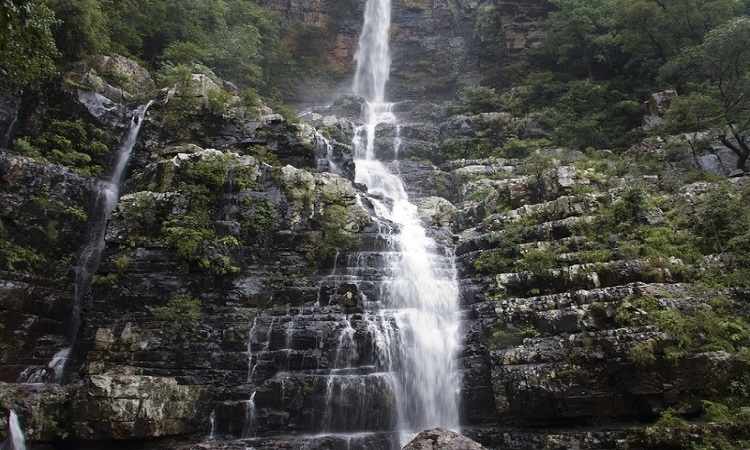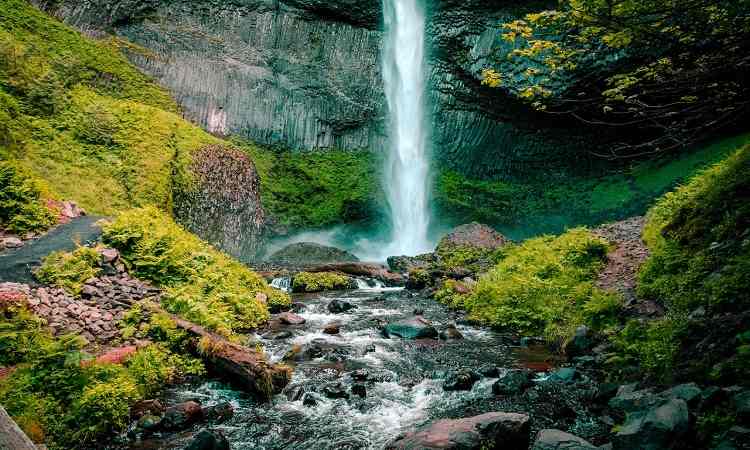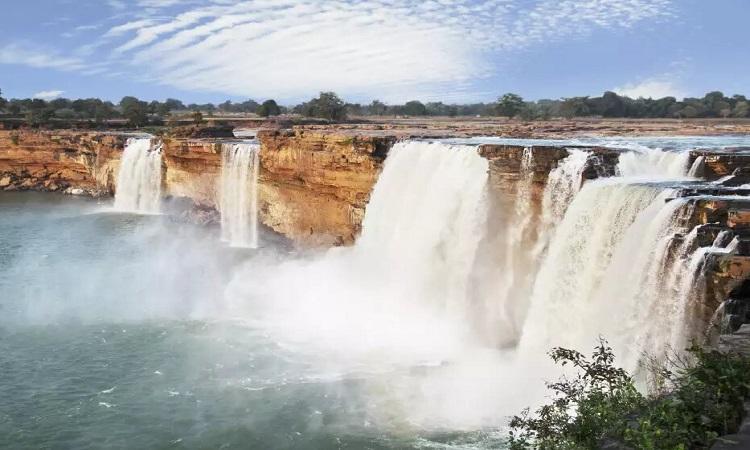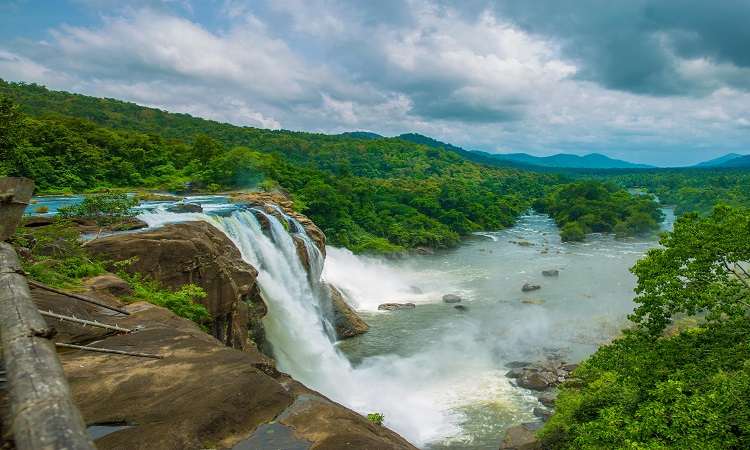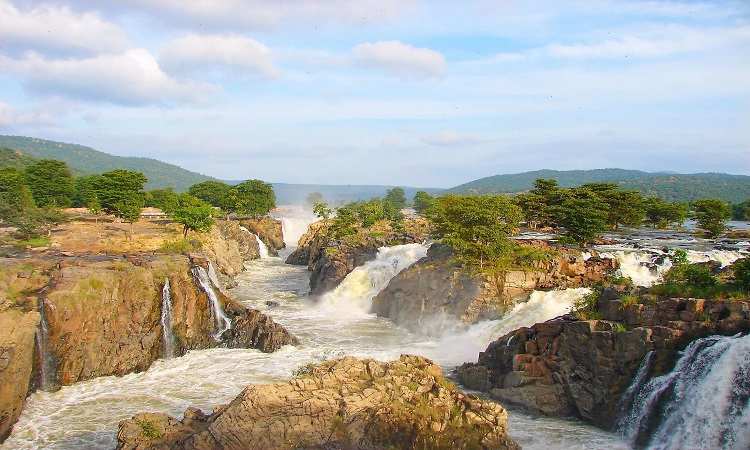Last Updated on August 23, 2024
India is a land of diverse landscapes and breathtaking natural wonders. From towering mountains to sprawling plains, India boasts a wide range of geographical features, including some of the most magnificent waterfalls in the world. The country is blessed with an abundance of rivers and cascades, making it a paradise for waterfall enthusiasts. In this article, we will explore the 30 biggest waterfalls in India, each possessing its unique charm and allure.
Here Are the 12 Best Biggest Waterfalls In India
1. Jog Falls, Karnataka

Located in the Shimoga district of Karnataka, Jog Falls is one of the highest waterfalls in India and a major tourist attraction. Formed by the Sharavati River, this waterfall falls from a height of 830 feet (253 m) in four separate sections, offering a mesmerizing view. The sheer power of the water and the surrounding lush greenery make Jog Falls a must-see place for nature lovers.
Located: Shimoga District, Karnataka, India
Altitude: About 830 feet (253 m)
Best time to visit: During the monsoon season (July to September) when the waterfalls are at their most magnificent.
2. Kunchikal Falls, Karnataka

Kunchikal Falls is located near Agumbe in Karnataka and is the highest waterfall in India. With a total height of 1,493 feet (455 meters), it is a sight to behold. The falling water amidst lush green surroundings makes it a must-see place for nature lovers. These waterfalls are formed by the Varahi River, which adds to the picturesque beauty of the area.
Located: Shimoga District, Karnataka, India
Altitude: About 1,493 feet (455 m)
Best time to visit: During the monsoon season (June to October) when the waterfalls are at full flow.
3. Dudhsagar Waterfall, Goa

Located on the Mandovi River in Goa, Dudhsagar Falls is a spectacular four-tiered waterfall that resembles a sea of milk. With a total elevation of 1,017 feet (310 m), it is one of the most popular tourist destinations in the area. The name “Dudhsagar” translates to “Sea of Milk” in the local Konkani language, and it accurately describes the cascading white water flowing down the rocky cliffs.
Located: Goa and Karnataka border, India
Altitude: About 1,017 feet (310 m)
Best time to visit: During the monsoon season (June to September) when the waterfalls peak.
4. Meenmutty Falls, Kerala

Located amidst the lush green forests of Wayanad in Kerala, Meenmutty Falls is a three-tiered waterfall that falls from a height of 984 feet (300 m). The journey through dense foliage to reach the waterfall further enhances the adventurous experience. The waterfalls create a mesmerizing sight, and the surrounding natural beauty makes it a popular destination for nature lovers and trekkers.
Located: Wayanad District, Kerala, India
Altitude: About 984 feet (300 m)
Best time to visit: Post-monsoon season (October to May) when the flow of the falls is steady.
5. Bhimlat Falls, Rajasthan

Located near Bundi in Rajasthan, Bhimlat Falls is a hidden gem in the arid state. This waterfall flowing from the water of the Chambal River falls from a height of 60 feet (18 meters). The pristine surroundings and serene environment make it an ideal place for nature lovers. This waterfall is named after Bhima, a mythological character from the Indian epic Mahabharata.
Located: Bundi District, Rajasthan, India
Altitude: About 328 feet (100 m)
Best time to visit: Post-monsoon season (August to November) when there is good flow in the falls.
6. Iruppu Falls, Karnataka

Located in the Brahmagiri range of the Western Ghats in Karnataka, Iruppu Falls is a beautiful waterfall with religious significance. The waterfall falls from a height of 170 feet (52 m) and is believed to be a holy place for Hindu pilgrims. Legend has it that Lord Rama and his brother Lakshmana passed through this area during their search for Lord Rama’s wife Sita.
Located: Coorg (Kodagu) district, Karnataka, India
Altitude: About 170 feet (52 m)
Best time to visit: Post-monsoon season (October to January) when the waterfalls are at their best.
7. Kempty Falls, Uttarakhand

Kempty Falls is located near Mussoorie in Uttarakhand and is a popular tourist destination. This waterfall is formed by the water of the Yamuna River, which falls from a height of 40 feet (12 m). It provides relief from heat. The name “Kempty” is derived from the word “camp-tea”, which refers to the British practice of holding tea parties near waterfalls during the colonial era.
Located: Mussoorie, Uttarakhand, India
Altitude: about 4,500 feet (1,370 m)
Best time to visit: Summer season (March to June) when the weather is pleasant.
8. Thalaiyar Falls, Tamil Nadu

Also known as Rat Tail Falls, Thalaiyar Falls is located in the Dindigul district of Tamil Nadu. This waterfall falls from a height of 974 feet (297 m) and is surrounded by the natural beauty of the Palani Hills. The name “Thalaiyar” translates to “bull’s head” in Tamil, which refers to the shape of the waterfall as it resembles a bull’s head.
Located: Dindigul District, Tamil Nadu, India
Altitude: About 974 feet (297 m)
Best time to visit: Post-monsoon season (October to December) when there is good flow in the falls.
9. Courtallam Falls, Tamil Nadu

Located in the Western Ghats of Tamil Nadu, Courtallam Falls is a series of waterfalls formed by the Chittar River. Also known as the “Spa of South India”, the falls are believed to have medicinal properties, attracting tourists seeking therapeutic benefits. People often take medicinal baths using the water from these springs, which is said to have healing properties for various diseases.
Located: Tirunelveli district, Tamil Nadu, India
Altitude: Varies at different falls, ranging from 32 feet (10 m) to 131 feet (40 m).
Best time to visit: Post-monsoon season (July to September) when the waterfall is at its peak.
10. Vantawng Falls, Mizoram

Located near Thenzawl in Mizoram, Vantawng Falls is the highest waterfall in the state. The waterfall falls from a height of 751 feet (229 m) and is surrounded by dense bamboo forests, presenting a picturesque environment. The falling water creates a serene environment amid the pristine natural surroundings.
Located: Serchhip District, Mizoram, India
Altitude: About 751 feet (229 m)
Best time to visit: Post-monsoon season (October to February) when there is good flow in the falls.
11. Langshiang Falls, Meghalaya

Langshiang Waterfall, located near Mawlynnong village in Meghalaya, is one of the most beautiful waterfalls in the state. Falling from a height of 1,106 feet (337 meters), this waterfall offers a stunning view amid lush green hills and forests. The remote location adds to the charm, making it a hidden gem for nature lovers.
Located: West Khasi Hills District, Meghalaya, India
Altitude: About 1,106 feet (337 m)
Best time to visit: Post-monsoon season (October to March) when the waterfall is at its best.
12. Barkana Falls, Karnataka

Barkana Falls is located in the Shimoga district of Karnataka and is one of the highest waterfalls in India. It falls from a height of 850 feet (259 m) and is formed by the Sita River. This waterfall is surrounded by dense forests, making it a delightful place for trekking and nature walks.
Located: Shimoga District, Karnataka, India
Altitude: About 850 feet (259 m)
Best time to visit: Post-monsoon season (October to February) when the waterfalls are in full flow.
13. Khandadhar Falls, Odisha

Located in the Sundergarh district of Odisha, Khandadhar Falls is a breathtaking waterfall that falls from a height of 800 feet (244 m). This waterfall is situated amidst the Eastern Ghats and is surrounded by lush green forests. The beautiful view of the waterfalls attracts tourists and nature lovers.
Located: Sundergarh District, Odisha, India
Altitude: About 800 feet (244 m)
Best time to visit: Post-monsoon season (October to February) when there is good flow in the falls.
14. Kynrem Falls, Meghalaya

Located near Cherrapunji in Meghalaya, Kynrem Falls is a three-tiered waterfall that falls from a height of 1,001 feet (305 m). These waterfalls are surrounded by dense forests and offer a serene environment. The picturesque beauty and pleasant sound of falling water make it a popular tourist destination.
Located: East Khasi Hills District, Meghalaya, India
Altitude: about 1,001 feet (305 m)
Best time to visit: Post-monsoon season (October to February) when the waterfall is at its best.
15. Dhuandhar Falls, Madhya Pradesh

Dhuandhar Falls is located in Bhedaghat, Madhya Pradesh, and is formed by the Narmada River. The name “Smoky Waterfall” translates to “Smoky Waterfall”, and it accurately describes the mist and spray created by the cascading water. This waterfall falls from a height of 98 feet (30 m) and presents a mesmerizing view, especially during sunrise and sunset.
Located: Jabalpur district, Madhya Pradesh, India
Altitude: About 98 feet (30 m)
Best time to visit: All year round, but the post-monsoon season (October to March) is ideal.
16. Dabbe Falls, Karnataka

Located near Hosagadde in Karnataka, Dabbe Falls is a lesser-known waterfall that falls from a height of 442 feet (135 m). Dense forests surround the waterfalls and are a tranquil oasis amidst nature. The fast-flowing water and serene environment make it an ideal place for relaxation and refreshment.
Located: Uttara Kannada District, Karnataka, India
Altitude: About 442 feet (135 m)
Best time to visit: Post-monsoon season (November to February) when the waterfalls are at full flow.
17. Shivanasamudra Falls, Karnataka

Shivanasamudra Falls is a beautiful waterfall formed by the Kaveri River. Located in Mandya District, Karnataka. The waterfalls fall from a height of 305 feet (93 m) and are surrounded by lush greenery, which adds to their attraction. The falling water and rocky terrain make it a popular spot for nature lovers and photographers.
Located: Mandya District, Karnataka, India
Altitude: About 305 feet (93 meters)
Best time to visit: Post-monsoon season (August to December) when there is good flow in the falls.
18. Soochipara Falls, Kerala

Located in the Wayanad district of Kerala, Soochipara Falls is a three-tiered waterfall that falls from a height of 656 feet (200 m). Also known as Sentinel Rock Falls, it is surrounded by dense forests and offers a mesmerizing view of the beauty of nature. Visitors can enjoy swimming in the natural pool at the base of the waterfall or go on a trek on the surrounding trails.
Located: Wayanad District, Kerala, India
Altitude: About 656 feet (200 m)
Best time to visit: Post-monsoon season (October to February) when the waterfall is at its best.
19. Hebbe Falls, Karnataka

Located in the Chikmagalur district of Karnataka, Hebbe Falls is a picturesque waterfall that falls from a height of 551 feet (168 m). Surrounded by dense forests and coffee plantations, this waterfall provides a refreshing and invigorating experience. Tourists can reach the waterfall through a scenic trek or enjoy a coral ride in the nearby Bhadra River.
Located: Chikkamagaluru District, Karnataka, India
Altitude: About 551 feet (168 m)
Best time to visit: Post-monsoon season (October to February) when there is good flow in the falls.
20. Thirparappu Falls, Tamil Nadu

Located in the Kanyakumari district of Tamil Nadu, Thirparappu Falls is a waterfall formed by the Kodayar River. The waterfalls fall from a height of 50 feet (15 m) and are known for their scenic beauty and serene environment. The surrounding landscape, which includes lush greenery and rocky cliffs, adds to the attraction of the waterfall.
Located: Kanyakumari district, Tamil Nadu, India
Altitude: About 50 feet (15 m)
Best time to visit: Post-monsoon season (October to January) when the waterfalls are at full flow.
21. Vajrai Falls, Maharashtra

Located near Satara in Maharashtra, Vajrai Falls is a stunning waterfall nestled in the Sahyadri Mountains. It falls from a height of 853 feet (260 m) and is surrounded by lush green forests and rocky cliffs. The waterfalls gain prominence during the monsoon season when they are in full flow, creating a majestic sight for the visitors.
Located: Satara District, Maharashtra, India
Altitude: About 853 feet (260 m)
Best time to visit: Post-monsoon season (August to February) when there is good flow in the falls.
22. Bhagsu Waterfall, Himachal Pradesh

Located near Mcleodganj and Dharamshala in Himachal Pradesh, Bhagsu Waterfall is a popular tourist attraction in the region. The waterfall formed by the Bhagsu River falls from a height of approximately 85 feet (26 m). The serene atmosphere and cool mist created by the falling water make it a favorite place for nature lovers and trekkers.
Located: Dharamshala, Himachal Pradesh, India
Altitude: About 85 feet (26 m)
Best time to visit: Post-monsoon season (September to November) when there is good flow in the falls.
23. Nohkalikai Waterfall, Meghalaya

Nohkalikai Falls is located near Cherrapunji in the state of Meghalaya, India. It is one of the highest waterfalls in India, reaching a height of approximately 1,115 feet (340 m). The waterfall is fed by rainwater collected on the summit of the plateau, and the water falls into a turquoise pool below. The name “Nohkalikai” translates to “Jump of Likai” in the local Khasi language, and is associated with a tragic folktale.
Located: Cherrapunji, Meghalaya, India
Altitude: About 1,115 feet (340 m)
Best time to visit: Post-monsoon season (October to February) when the waterfall is at its best.
24. Jogini Falls, Himachal Pradesh

Jogini Waterfall is located near Manali in the state of Himachal Pradesh. It is a beautiful waterfall which is revered by the local people and holds religious significance. This waterfall falls from a height of about 164 feet (50 meters) amidst the picturesque landscape of the Himalayas. Tourists can enjoy a beautiful trek to reach the waterfall and enjoy the serene environment.
Located: Manali, Himachal Pradesh, India
Altitude: About 164 feet (50 m)
Best time to visit: Post-monsoon season (August to November) when there is good flow in the falls.
25. Thusharagiri Waterfall, Kerala

Thusharagiri Waterfall is located in Kozhikode district of Kerala and is a popular tourist destination. The name “Thusharagiri” translates as “snow-covered mountains” in the local Malayalam language, as the waterfalls resemble streams of snow falling down the hills. The waterfalls are formed by the confluence of three streams, and they provide a serene and refreshing experience to the visitors.
Located: Kozhikode district, Kerala, India
Altitude: About 246 feet (75 m)
Best time to visit: Post-monsoon season (September to February) when there is good flow in the falls.
26. Talakona Falls, Andhra Pradesh

Talakona Falls is a beautiful gem located in Chittoor district in Andhra Pradesh, India. With an impressive height of approximately 270 feet (82 m), it is one of the tallest waterfalls in the region. The enchanting beauty of Talakona can be best experienced in the post-monsoon season from September to February, when the waterfall flows in abundance, creating a breathtaking scenic view.
Located: Chittoor District, Andhra Pradesh, India
Altitude: About 270 feet (82 m)
Best time to visit: Post-monsoon season (September to February) when the waterfalls are at their fullest and most picturesque.
27. Kune Falls, Maharashtra

Kune Falls is located in Lonavala, Maharashtra. It is a three-tiered waterfall falling from a height of approximately 660 feet (200 m). Surrounded by lush greenery and beautiful views of the Sahyadri Mountains, Kune Waterfall is a popular attraction for nature lovers and adventure enthusiasts. Tourists can enjoy the refreshing spray of water and click stunning photographs.
Located: Lonavala, Maharashtra, India
Altitude: About 660 feet (200 m)
Best time to visit: Post-monsoon season (August to February) when there is good flow in the falls.
28. Chitrakote Falls, Chhattisgarh

Chitrakote Falls, often called the “Niagara Falls of India”, is located in the Bastar district of Chhattisgarh. It is one of the widest waterfalls in India, measuring approximately 1,640 feet (500 m) wide. This waterfall is formed by the Indravati River and falls from a height of approximately 98 feet (30 m). The surrounding lush green forest and the rainbow formed by the mist further enhance its attraction.
Located: Bastar district, Chhattisgarh, India
Altitude: About 98 feet (30 m)
Best time to visit: Post-monsoon season (October to February) when the waterfalls are in full flow.
29. Athirapally Falls, Kerala

Athirapally Falls is located in the Thrissur district of Kerala. It is a spectacular waterfall formed by the Chalakudy River that falls from a height of about 80 feet (24 m). Surrounded by lush green Sholayar forests, Athirapally Falls is known for its scenic beauty and is often called the “Niagara of India”. Due to its charming charm, it has been shown in many Indian films.
Located: Thrissur District, Kerala, India
Altitude: About 80 feet (24 m)
Best time to visit: Post-monsoon season (September to January) when the waterfalls are in full flow.
30. Hogenakkal Falls, Tamil Nadu

Hogenakkal Falls is located on the Kaveri River in Dharmapuri district of Tamil Nadu. One of the most picturesque waterfalls in India. The name “Hogenakkal” translates to “smoking rocks” in Kannada, which refers to the mist and spray generated by the spring water. The waterfall is known for its medicinal properties, and tourists can also enjoy a boat ride and take a dip in the refreshing water.
Located: Dharmapuri District, Tamil Nadu, India
Altitude: About 66 feet (20 m)
Best time to visit: Post-monsoon season (September to February) when there is good flow in the falls.
Travel Tips:
Research the best time to visit: Flow levels of waterfalls in India vary throughout the year. Research and visit in the post-monsoon season when the waterfalls are at their most impressive.
Wear Appropriate Footwear: Waterfall areas can be slippery and rocky. Wear sturdy, non-slip shoes to ensure safety and comfort during your trip.
Carry Essentials: Carry drinking water, snacks, and sunscreen with you during your trip to the waterfall as facilities may be limited in remote areas. Additionally, pack a waterproof bag to protect your belongings from splashes of water.
Follow Safety Precautions: Follow any safety guidelines provided by local authorities or park authorities. To ensure your safety, do not go to restricted areas or swim in prohibited areas.
Respect The Environment: Help preserve the natural beauty of the waterfalls by not littering and disposing of waste properly. Respect any rules or regulations regarding wildlife and vegetation conservation in the area.
Frequently Asked Questions:
Q.1 Which is the highest waterfall in India?
Answer: One Of The highest waterfalls in India is Kunchikal Waterfall is located in the Shimoga district of Karnataka. Its height is approximately 1,493 feet (455 m).
Q.2 Can I swim in the springs?
Answer: Swimming in waterfalls can be risky due to strong currents and submerged rocks. It is important to follow the safety guidelines and restrictions set by local authorities. Some waterfalls may have designated areas for swimming where it is relatively safe.
Q.3 Is there any accommodation near the waterfall?
Answer: Many popular waterfalls in India have facilities ranging from hotels and resorts to guesthouses. Availability of accommodation may vary depending on location, so planning and booking in advance is advised.
Q.4 Is it necessary to hire a guide to visit the falls?
Answer: Hiring a guide is not always necessary, but it can enhance your experience by providing information about the waterfall, and its surroundings, and ensuring your safety. Guides can also help you find hidden viewpoints and paths.
Q.5 Is there any entry fee to visit the falls?
Answer: Some waterfalls may have an entrance fee or require a permit for access. Entrance fees, if applicable, are usually nominal and help maintain and preserve the site. It is advisable to inquire about entry fees in advance.
Conclusion:
The diverse landscape of India is adorned with many spectacular waterfalls, each with its unique charm and beauty. From the mighty Jog Falls in Karnataka to the serene Bhagsu Waterfalls in Himachal Pradesh, these natural wonders provide a respite from bustling city life and an opportunity to connect with the peace of nature. Exploring the 30 largest waterfalls in India is an adventure that enables visitors to witness the grandeur and raw power of these waterfalls, leaving them in awe and getting closer to the natural world.
Suggest To Read:
How to Reach Lakshadweep
20 Wildlife Sanctuaries in Gujarat & National Parks
24 Hill Stations in South India
How to Reach Vaishno Devi
